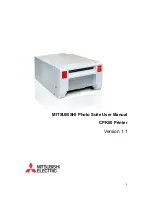
27
New communication behaviours in a Web 2.0 world
A.7 Really Simple Syndication (RSS)
63
RSS is perhaps the easiest of these items to define. The end-user receives a short message
containing information with content he or she has previously defined. It is mostly used by
internet news services such as news pages or blogs to notify users about articles that are newly
published or that focus on selected topics of interest.
A.8 Tagging
Tags are one-word descriptors that can be assigned to bookmarks to help users organize and
remember them. They are similar to keywords, but they are chosen by the user, and do not form
a hierarchy. An author can assign as many tags to a bookmark as he or she likes and rename
or delete them later, a much easier and more flexible process than fitting information into
pre-defined categories or folders
64
. Tags can be added also to digital content: for example they
can show a certain part of a photograph, or direct a user to a specific place in a podcast. Because
they make it easier to locate the exact content a user is searching for tags can become a step
towards the Semantic Web (see Chapter 5).
A.9 Peer-to-peer programs
Peer-to-peer programs involve the computer sharing part of its own transmission capacity,
or certain content with other users in the same network. Often used for file sharing,
communication, or data transmission, peer-to-peer programs have recently become popular
among young users for sharing of content like music, or movies, or for communication using
programs such as Windows Messenger or Skype
65
.
Example: Skype Technologies
Skype Technologies
was launched in 2003 as an alternative to classical
landline and mobile phones. It enables users to make phone calls to each
other, send messages or to chat online. Skype uses part of the connection
capacity of every signed‑in user to keep the system running.
Skype’s business model is based on generating revenues through premium
services such as phone calls to and from landlines and mobile phones,
cheap messaging, voicemail and call forwarding.
A.10 Widgets
Widgets (also called gadgets) are ‘mini applications’, simple bits of code dragged onto a desktop
or pasted into a personal page, where they are constantly updated with any kind of information
the user wants or approves. Widgets can be used to update Web pages with news sections
downloaded from other sites, or simply to customize the user interface in whichever program the
user is using. This is an important step in the development of Web 2.0: it means that users are
taking ownership of the look of their interfaces
66
.
Содержание Web 2.0 services
Страница 40: ...www alcatel lucent com...














































